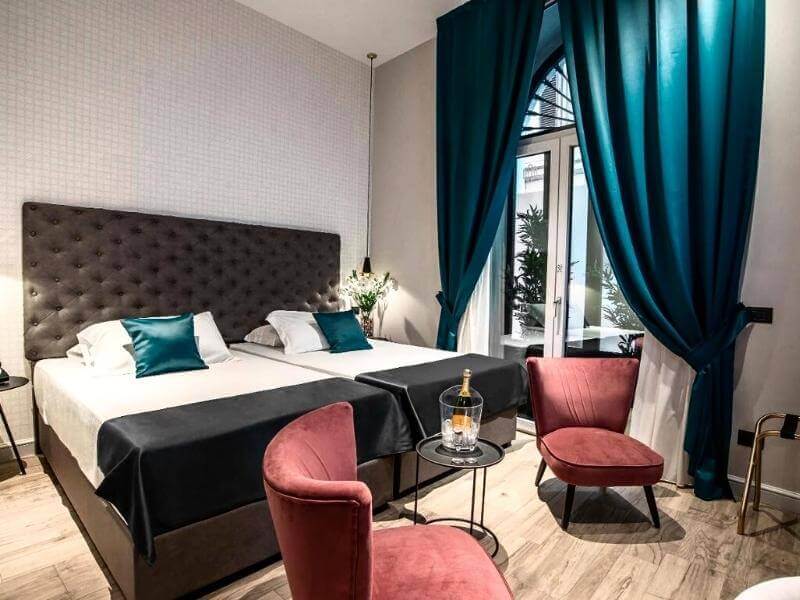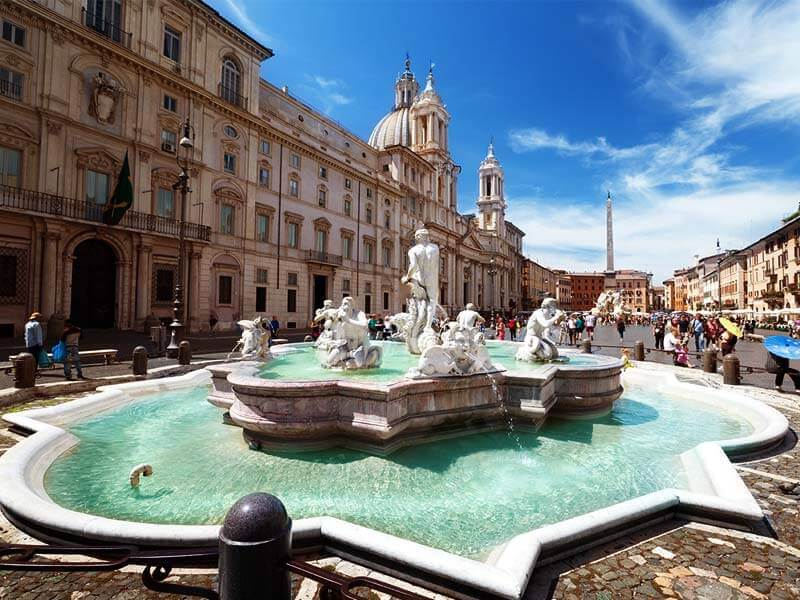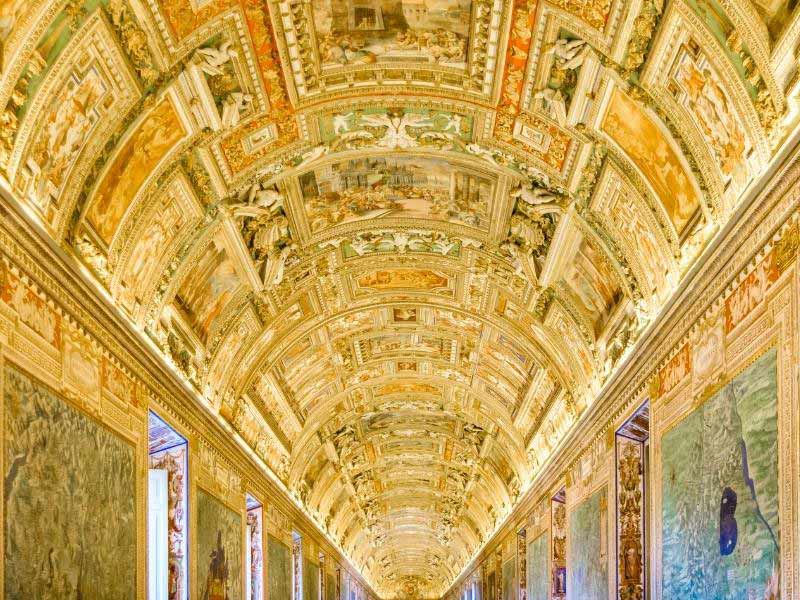The Castel Sant'Angelo in Rome - Castel Sant'Angelo
Home » Attractions » Castel Sant Angelo
| DE

- - Updated on
On the right bank of the Tiber rises the almost 2000-year-old Castel Sant’Angelo in Rome. The former mausoleum of Emperor Hadrian was built in 139 AD.
Over the years, the fortress became a refuge for popes until it finally became one of Rome’s museums in February 1906.
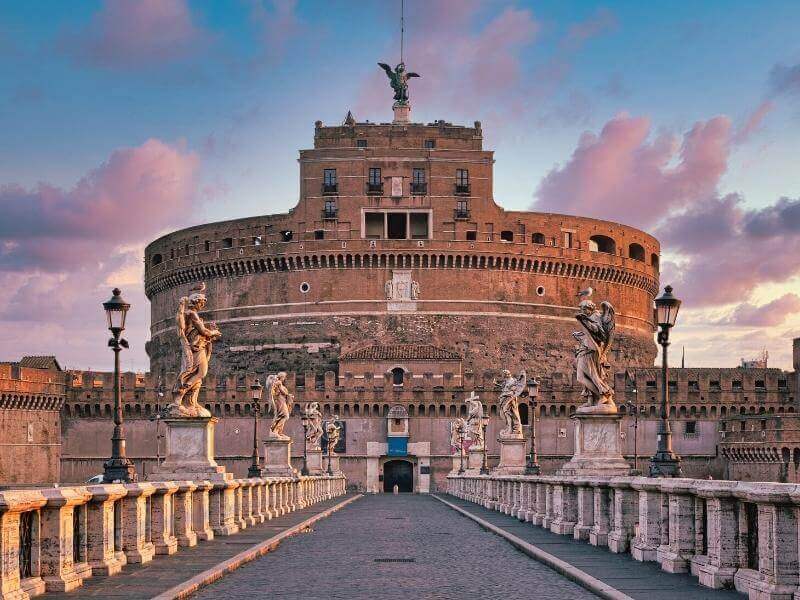
This historic attraction in Rome is only 900 meters away from the Vatican City as the crow flies. We have compiled all the relevant information on various Castel Sant’Angelo tickets separately.
The viewing platform of Castel Sant’Angelo is also particularly fascinating. The dome of St. Peter’s Basilica looks particularly beautiful from here! In its history, Castel Sant’Angelo also served as a:
- Imperial mausoleum
- Refuge of the Popes
- Medieval fortress
- Modern museum
Visitor Information:
Address:
Lungotevere Castello 50, 00186 Roma
Transportation:
Buses: 23, 34, 49, 64, 87, 280, 492, 926 and 990
Opening hours:
Tuesday – Sunday: 09.00 – 19.30
Mondays: closed
Nearby:
Piazza Navona (0,7 km)
St. Peter’s Basilica (0,7 km)
Vatican Museums (1,2 km)
Pantheon (1,2 km)
Recommended exploration time:
2-3 Stunden
Our Tip:
With the Rome City Pass you get free entry to Castel Sant’Angelo, as well as entry to the Colosseum, St. Peter’s Basilica, Roman Forum & Palatine Hill, and priority entry to the Vatican Museums & Sistine Chapel!
Development of Castel Sant'Angelo over the years:
From the former tomb of the emperor, Castel Sant’Angelo has developed steadily over time. For a long time, Castel Sant’Angelo served as a reliable refuge for popes, which has been directly connected to the Vatican via a secret passageway since 1281.
The sumptuous rooms and numerous works of art and paintings still show feudal life in the former papal chambers. Pope Clement VII sought refuge here for a whole seven months after Rome was taken by the Imperial army in 1527.

But it’s more than just the treasure chamber that is worth seeing! Today’s museum fascinates more than a million tourists yearly with a range of excitingly contradictory features.
In addition to all the splendor and wealth of the papal treasury, visitors also see a darker side of Castel Sant’Angelo. Behind the almost menacing castle walls are mystical corridors and a series of gruesome stories from bygone eras.
You can still get an impression of the torture cellar of the former prison today. Incidentally, Castel Sant’Angelo has often served as a filming location for famous blockbuster movies, such as the art heist film Red Notice.
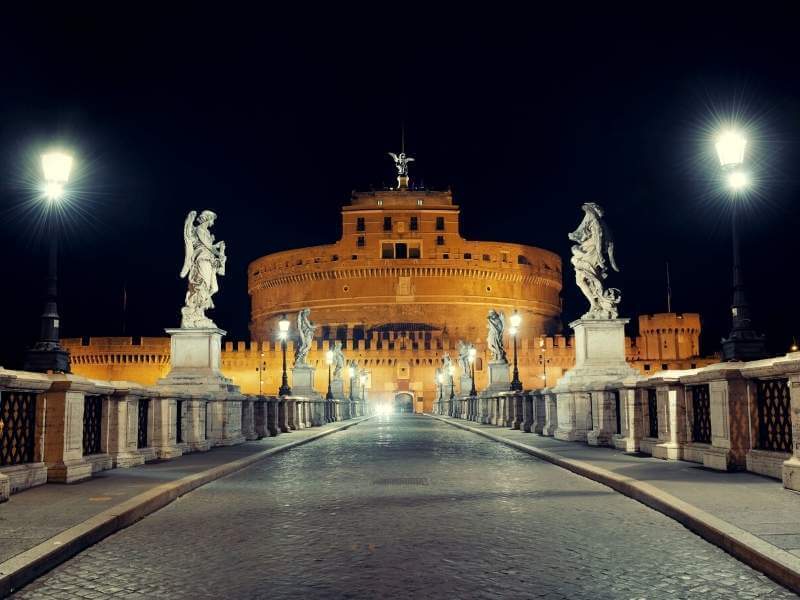
Our hotel recommendations near Vatican City:
Have you already found accommodation?
We’ve researched the best hotels nearby! -> Hotels in Vatican City
Information about Castel Sant'Angelo in the video:
You should take advantage of these highlights:
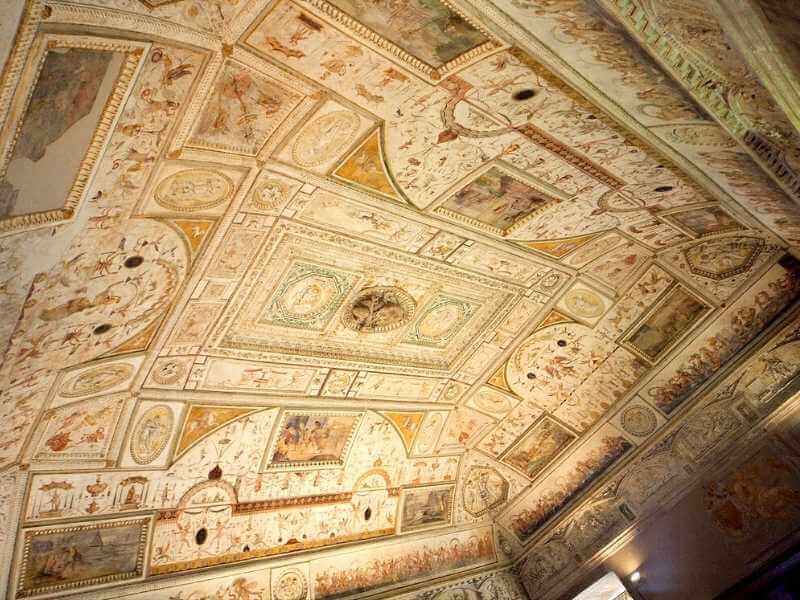
- Medieval armor & weapons
- Mausoleum & burial chambers
- Prison
- Ancient museum with many art treasures
- Halls and apartments of the popes
- Impressive roof terrace with a great view
The museum, which has over 50 rooms, impresses with fabulous paintings, murals, sculptures, frescoes, and furniture. If you visit Rome in winter, there is a highly recommended ice skating rink next to Castel Sant’Angelo. You will find it in Piazza Adriana during the pre-Christmas period.
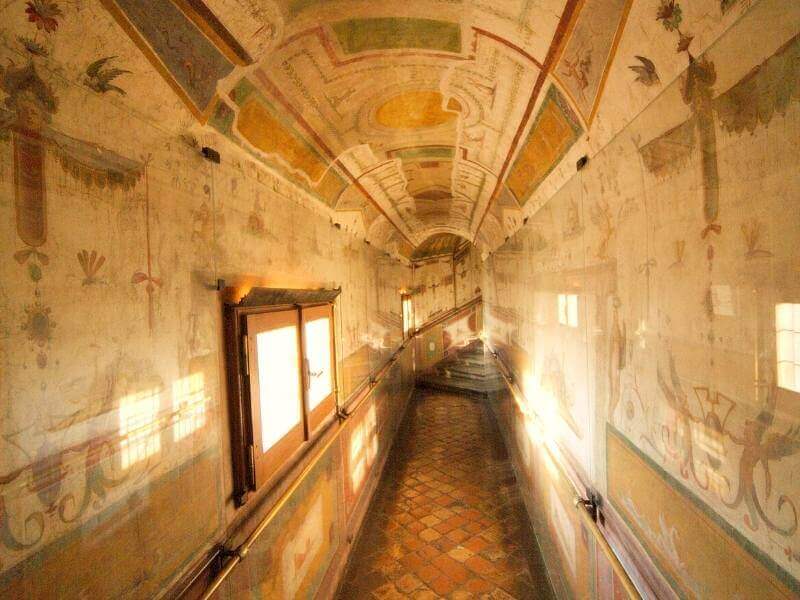
Castel Sant’Angelo surprises its visitors time and time again in a charming way. From a gloomy-looking castle façade, you enter a museum full of pomp, splendor, and wealth.
In addition to spectacular works of art from the past, Castel Sant’Angelo also has a prison, some magnificent halls and apartments of former popes, and the mausoleum of the emperors.
Another highlight is the castle’s fantastic roof terrace, which has existed since the mid-17th century thanks to Alexander VII. The viewing platform with a view of the Vatican and St. Peter’s Basilica alone is worth the entrance fee to Castel Sant’Angelo.

The bronze statue of the Archangel Michael from the 18th century is also located here. A little fun fact on the side: it is by no means the first. The first four statues were destroyed by lightning and had to give way.
The fifth statue of St. Michael (from 1544) is located in the courtyard of Castel Sant’Angelo, making this the 6th model! There are exciting pieces of equipment from the 16th to 19th centuries in the armory for all weapons and armor fans!
The history of Castel Sant'Angelo
Castel Sant’Angelo was built in Rome around the year 139 AD. The castle was intended to be the resting place of Emperor Hadrian (76 – 138 AD) and his family, as well as a mausoleum for future emperors.
To connect it as well as possible to the city of Rome, today’s Ponte Sant Angelo was also built to bridge the Tiber. Contrary to initial assumptions, however, Castel Sant’Angelo only served as a tomb for future emperors until 217 AD. They included:
- Emperor Hadrian
- Emperor Antonius Pius
- Emperor Marcus Aurelius
- Emperor Commodus
- Emperor Septimus Servus
As a result, Castel Sant’Angelo became more and more of a fortress over the years. Especially with the construction of the Aurelian Wall in 280, the defensive power of the castle increased many times over.
It is, therefore, no wonder that the castle became increasingly coveted. The strategically advantageous location of Castel Sant’Angelo, in particular, appealed to both popes and the nobility.
Incidentally, Castel Sant’Angelo owes its name to Pope Gregory the Great. When the plague raged in Rome in 590 AD, the Archangel Gabriel is said to have appeared to the Pope during a penitential procession and proclaimed the imminent end of the plague.
The bronze angel at the top of Castel Sant’Angelo still commemorates this vision today. In 1277, the fortress was finally extended again, and a secret, above-ground passageway (“Passetto di Borgo”) to the Vatican was added.
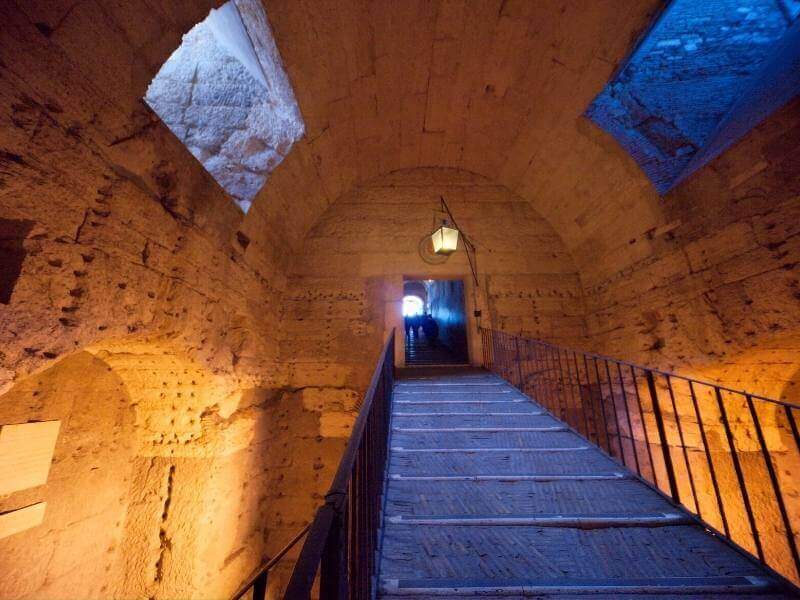
Pope Nicholas III had the 800-meter-long escape route built to increase his chances of survival in the event of potential danger.
The connecting wing between Castel Sant’Angelo and the Vatican, which is currently closed, would be an essential part of the bridge in the centuries that followed.
For example, Pope Clement entrenched himself in the fortress for almost four weeks after Emperor Charles V began plundering Rome in 1527.
Pius VII also used the tunnel after Napoleon Bonaparte invaded Rome in February 1798. However, with its princely walls, the castle was not only used as a place of refuge but also as a prison and place of torture for unwanted heretics.
It was not until 1870 that things became increasingly civilized in Castel Sant’Angelo. The Italian army, which took over the castle then, initially turned the ancient building into barracks until it finally became an official museum in 1906.
The Bridge of Angels - Ponte Sant'Angelo
The Angel’s Bridge (also known as the “Ponte Sant’Angelo”) was one of the first and the most critical bridges over the Tiber. It connects Castel Sant’Angelo with Rome’s historic old town. However, the bridge built by Emperor Hadrian was initially called the “Elian Bridge” before it was given its current name.
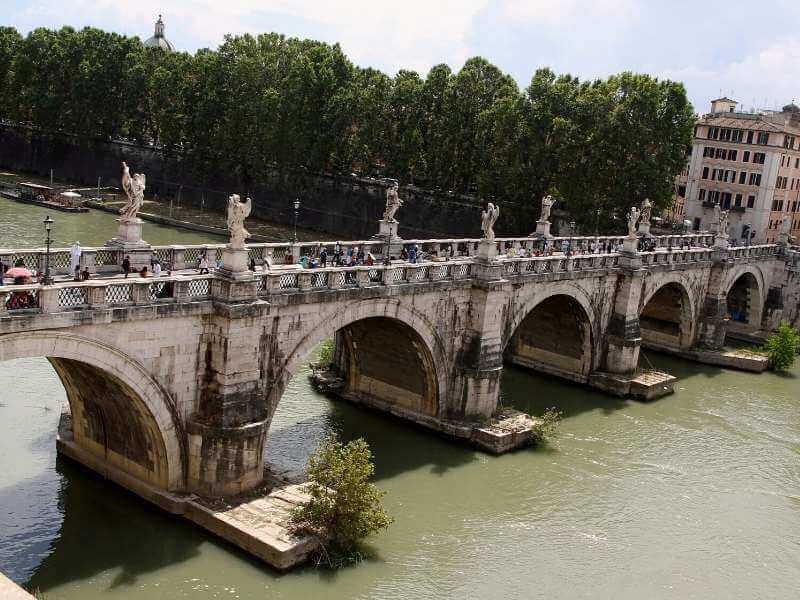
When the bridge was restored in 1535, the Pope had St. Peter and St. Paul statues erected opposite the castle. The Angels’ Bridge only received its current decoration in the 17th century by order of Pope Clement VII.
The pupil of Gian Lorenzo Bernini, whose sculptures can be seen today in the Galleria Borghese, made the ten angel statues. The glow of the beautifully illuminated Ponte Sant’Angelo is particularly magical in the dark.
Where is Castel Sant'Angelo located in Rome?
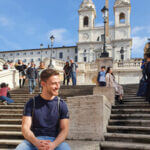
Editor: Sebastian Erkens
Hey and welcome to Rome-Tourist! My name is Sebastian and I travel regularly to Rome, Italy.
On our Rome blog you will get valuable travel tips. If you have any questions about specific tours or sights, feel free to leave us a comment.
These articles may also interest you:

